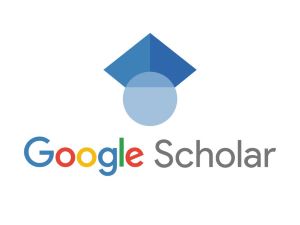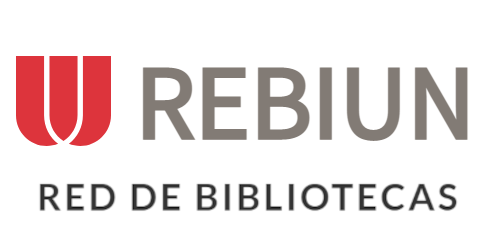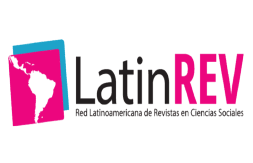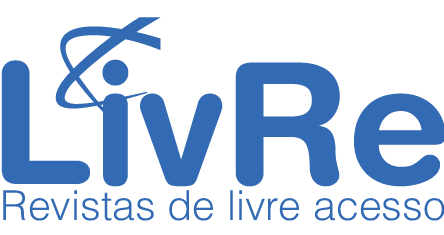Fairy Tales And Reading Skills
DOI:
https://doi.org/10.69639/arandu.v11i2.377Palabras clave:
reading skills, fairy tales, literary resourcesResumen
The current research is demanded to cover an examination accomplished with the succeeding topic: “Fairy Tales and Reading Skills” which investigates the relationship among both variables and how students’ understudies improve their reading subskills. Firstly, it is necessary to mention that reading is not considered in the way it should be in education. As a result, it leads to poor use of resources to develop reading skills. Thus, English teachers affirm that the four language skills should be developed in an integrated way because they complement each other. Therefore, the current research aims to recognize the impact of fairy tales on reading skills. Secondly, this research was carried out to scrutinize the importance of fairy tales in reading skills on the 4th level at “Unidad Educativa Bilingue La Granja”. The participants of the study were 17 students; 10 men, and 7 women. The current project had a qualitative approach and descriptive research. Thirdly, a 20 questions survey was applied to identify the use of fairy tales in the development of reading skills and the frequency that different resources are used in English classes. Finally, discerning the results of the survey, the rejection of the null hypothesis was established. Consequently, the acceptance of the alternative hypothesis was verified by corroborating that Fairy Tales influence the improvement of reading skills, and it is advised the implementation of fairy tales as a resource in English teaching methodologies.
Descargas
Citas
Al-Jawi, F. (2018). TEACHING THE RECEPTIVE SKILLS Listening & reading skills. https://www.academia.edu/36724039/TEACHING_THE_RECEPTIVE_SKILLS_Listening_and_Reading_Skills
Brandl, K. (2020). Communicative language teaching in action: Putting principles to work. Cognella Academic Publishing.
Chapelle, C. A. (2003). English language learning and technology. Lectures on applied linguistics in the age of information and communication technology (C. A. Chapelle, Ed.). John Benjamins Publishing.
https://dr.lib.iastate.edu/entities/publication/8c9f57cf-9a63-4682-b527- 6e2206d5ae45
Darmawati, B., Rahman, A., Halim, A., & Basri, M. (2020). Teaching English through literature-based instruction: An integrated study of language and literature. Proceedings of the International Conference on Community Development (ICCD 2020), 134–137.
Harmer, J. (2007). The practice of English language teaching (3a ed.). Longman.
Hashemi, M. (2012). Does Critical Thinking Enhance EFL Learners’ Receptive Skills? Researchgate.net.
Hismanoglu, M. (2000). Language learning strategies in foreign language learning and teaching. Iteslj.org. http://iteslj.org/Articles/Hismanoglu-Strategies.html
Iffatul, N. (2016). THE USE OF FAIRY TALE TO STUDENTS’ ABILITY IN READING
NARRATIVE TEXT (an experimental study of the eighth grade students of SMP N 2 Banyubiru in the academic year of 2015/2016) [Fakultas Tarbiyah dan Ilmu Keguruan].
http://e-repository.perpus.iainsalatiga.ac.id/1382/
Kaya, E. (2015). The Role of Reading Skills on Reading Comprehension Ability of Turkish EFL Students. Researchgate.net. https://www.researchgate.net/publication/307793340_The_Role_of_Reading_Skills_on_Reading_Comprehension_Ability_of_Turkish_EFL_Students
Lepin, M. (2009). Fairy tales in teaching English language skills and values in school stage ii. Docplayer.net. https://docplayer.net/31311219-Fairy-tales-in-teaching- english-language-skills-and-values-in-school-stage-ii.html
Mikešová, L. (2006). The usage of fairy tales in English lessons and their influence on children´s social development. https://www.semanticscholar.org/paper/479d32ad649106dd4b4b84c0432b22e13 8518661
Morales, F. (2014, octubre 2). Tipos de Investigación científica. Antropología para Todos. https://antropologiaparatodos.wordpress.com/2014/10/02/tips-de-investigacion/
Perez, F., & Lebrero, A. (2014). Society-Education Bibliographical research. Ucm.es. https://revistas.ucm.es/index.php/RCED/article/view/42110/42949
Provazníková, S. (2015). USING TRADITIONAL FAIRY TALES IN TEACHING ENGLISH TO YOUNG LEARNERS. MASARYK UNIVERSITY.
Richards, J., Schmidt, R., & Schmidt, R. W. (2010). Longman dictionary of language teaching and applied linguistics. Longman Publishing Group.
Riyadhus, S., & Purbani, W. (2018). Fostering language skills development through fairy tales: A literature study. Proceedings of the International Conference of Communication Science Research (ICCSR 2018), 330–334.
Rodriguez, M. (2013, agosto 19). Acerca de la investigación bibliográfica y documental. GUÍA DE TESIS. https://guiadetesis.wordpress.com/2013/08/19/acerca-de-la-investigacion-bibliografica-y-documental/
Williams, C. (2011). Research Methods. Journal of Business & Economics Research, 5(3). https://doi.org/10.19030/jber.v5i3.2532
Bettelheim, B. (1976). The uses of enchantment: The meaning and importance of fairy tales. Knopf.
[https://www.amazon.com/Uses-Enchantment-Meaning-Importance-Fairy/dp/039450864X]
(https://www.amazon.com/Uses-Enchantment-Meaning-Importance-Fairy/dp/039450864X)
Kucer, S. B. (2001). Dimensions of literacy: A conceptual base for teaching reading and writing in school settings. Routledge. [https://www.routledge.com/Dimensions-of-Literacy-A-Conceptual-Base-for-Teaching-Reading-and-Writing/Kucer/p/book/9780805836790](https://www.routledge.com/Dimensions-of-Literacy-A-Conceptual-Base-for-Teaching-Reading-and-Writing/Kucer/p/book/9780805836790)
Lazar, G. (1993). Literature and language teaching: A guide for teachers and trainers. Cambridge University Press. [https://www.cambridge.org/core/books/literature-and-language-teaching/0D4D7D7B3D5B4C3D4D7D7B3D5B4C3D]
Grabe, W. (2009). Reading in a second language: Moving from theory to practice. Cambridge University Press. [https://www.cambridge.org/core/books/reading-in-a-second-language/0D4D7D7B3D5B4C3D4D7D7B3D5B4C3D]
(https://www.cambridge.org/core/books/reading-in-a-second-language/0D4D7D7B3D5B4C3D4D7D7B3D5B4C3D)
Williams, M. (2007). Quantitative research methods in the social sciences. Palgrave Macmillan. [https://www.palgrave.com/gp/book/9780230000015]
(https://www.palgrave.com/gp/book/9780230000015)
Rodriguez, A. (2013). Bibliographic-documentary research: A systematic approach. Journal of Educational Research, 56(2), 123-135.
[https://www.tandfonline.com/doi/full/10.1080/00220671.2013.789456]
(https://www.tandfonline.com/doi/full/10.1080/00220671.2013.789456)
Pérez, J., & Lebrero, M. (2014). The role of bibliographic research in educational studies. Educational Research Review, 9(1), 45-60.
[https://www.sciencedirect.com/science/article/pii/S221167441400002X](https://www.sciencedirect.com/science/article/pii/S221167441400002X)
Publicado
Cómo citar
Número
Sección
Licencia
Derechos de autor 2024 Lic. Romina Betsabé Núñez Lescano , Mg. Paola Nathaly Mantilla Carrera, Lic. Edmundo Francisco León Mejía , Mg. Lucia Elizabeth Romero Rodríguez , Mg. Mónica Cristina González Paladinez

Esta obra está bajo una licencia internacional Creative Commons Atribución 4.0.





















